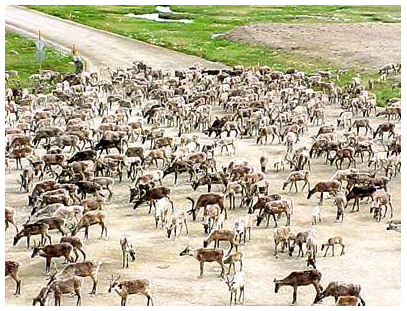
ANOTHER COFFEE BREAK: 40 YEARS BELOW ZERO, Part 11
February
12, 2016
Talking last week about the expressions you get from folks when
they ask you how you are doing, I neglected to mention one other funny that I
use on folks. This one almost got me in trouble because it has become so
frequent a response.
It really catches folks off guard when my answer is,
“Dangerous!” It stops them in their tracks. That’s NOT a good thing
to say, however, when the TSA agent asks you how you are when you are going
through the line to get on a flight. It happened a few weeks ago.
Sarah Hyndman, our assistant, was boarding a flight with me at Pasco when the
TSA agent popped the usual greeting. Without thinking about what I was
going to say, it just started to come out. I tried to catch myself, but
when the partial word “dang...” comes out and you try to switch it to “Great!”
it’s too late.
Sarah looked at me and put her finger over her lips. The
TSA agent was suddenly alert. My bags were gone through with a fine tooth
comb. Yup! That’s NOT a thing to say at the airport. Seemed
like it took 30 minutes for them to go through my things. Lesson
learned! Don’t just let words or expressions fly out of your mouth
unchecked.
We have a business associate whose expression is, “Blessed and
Highly Favored!” That’s a whole lot better.
I
was running long in last week's post, so I decided not to include some photos
that I could have added. These pictures will provide you with some more
visuals of our discussion. As noted last week, the Point Hope church was
virtually identical to the Wainwright church.

In
terms of seeing the kind of miraculous outpouring we'd seen during the previous
five years, Point Hope was no Barrow or Wainwright. We thought Barrow was
remote, but Point Hope made Barrow seem like a metropolis. It's not that
Point Hope was any farther away from "civilization" than any place
else.
Getting
to Point Hope was an adventure all its own. What remained of an old
military airstrip still existed on the point of land so that you could actually
land something larger than a Stinson Voyager or Piper Cub, but to get there
necessitated first flying from Fairbanks to Nome, then to Kotzebue, then to
Point Hope -- and sometimes requiring stops at Kivalina and Noatak
beforehand. Every leg of the journey was weather-dependent, and it was
not unusual to go for three weeks at a time with no airplanes, no mail, and no
contact with the outside world.
If
Dad had not previously been to Point Hope (maybe I'll get to tell you about his
boating adventure with Howard Andersen in our next Coffee Break) and at least
prepared the way in advance from a spiritual perspective, we'd have had all out
warfare in the Spirit. As it was, Point Hope had long been governed by a
shaman who absolutely did NOT want us in "his territory."
There
was an Episcopal church there which had been established some 60 or 70 years
earlier, but the local priest had no personal relationship with Jesus Christ
and therefore had no concept of leading people to the Lord or nourishing them
in a spiritual sense. To him, the shaman was no threat, and the shaman
likewise felt no spiritual threat from the priest.
Our
very presence in Point Hope was a declaration of war upon the prince of
darkness and the spiritual forces (see Ephesians 6) that ruled the
community. And war it was! Right from the get-go.
The
Episcopal church had existed in Point Hope for some 60 - 70 years or more, and
the entire community (there were no churches other than the Episcopal prior to
our arrival) considered itself to be of Episcopal "faith." The
problem with that was that many, if not most, of the villagers really didn't know
what that meant. Religious traditions that had been established in Point
Hope were firmly entrenched -- almost written in stone, if you will.
The
local priest had obviously never experienced a personal relationship with Jesus
Christ, and his Sunday morning "messages" were feel-good,
warm-and-fuzzy discourses on everything under the sun except Jesus
Christ. Because he himself had never experienced a life-change by and
through the power of the Holy Spirit in his life, nothing he did or said
brought any life-changes to those in the community. Many of the villagers
remained steeped in their superstitions, traditions carried over from centuries
past when they were migrating Mandarin Chinese escaping from Genghis Khan some
2,500 years before.
Just
as an aside to this discussion, while we were living in Barrow, an
anthropologist working with the Naval Arctic Research Laboratories who was
studying the ancient culture and history of the Alaskan (and Canadian) Eskimos
released the results of his decade-long research. He was able to pretty
clearly demonstrate that the Eskimos were a clearly distinct group of people
who were completely unrelated to the Indians. Their culture was
different, their skills differed, and their reasoning processes were
different. Buried in the various dialects of the Yupik, the Inuit, and
the Inupiat were words and phrases clearly of Mandarin origin. The
farther back in their history archaeologists dug, the more Chinese they became.
(My
brother and I were on a dig with my mother one day down the coast from Barrow
when we uncovered an ancient mound home. In that home were intricate
carvings made of ivory and jade which demonstrated a superb sense of the
artistic. One of the carvings had distinct Oriental features. It
was an elegantly executed ivory doll with feet that unscrewed to reveal an
ivory needle for sewing with sinew still in the needle. The piece
ultimately wound up in a museum.)
I've
said all that to say this: the religious traditions that had shaped the culture
of these people dated back thousands of years. The superstitions that
trapped and entangled their lives were deeply ingrained to the point that no
facade of pretend-Christianity would ever bring deliverance and freedom.
The
fact that Point Hope was still ordered under shamanistic ideas and concepts
meant that the villagers still feared the local shaman. He took great
delight in ensuring that the community feared him so as to maintain his place
of power and influence, and wouldn't hesitate for a second to pronounce curses
and cast spells on anyone who wouldn't yield to his instructions or demands.
When
we first arrived in Point Hope, the place really was a kind of
"fiefdom" with the shaman and the Episcopal priest both vying for
power and authority and influence -- and neither one having any concept of what
true authority and power were all about. But some spiritual preparations
had been made for our arrival about a year and a half earlier when Dad and
Howard Andersen made a boat trip, evangelizing villages, camp sites and hunting
stations along the arctic coast all the way from Kotzebue (which was about 150
miles southeast of Point Hope) to Kaktovik on Barter Island on the Canadian
border (a total distance of about a thousand miles).
The
plan for the boat trip had been made when we were still in the "lower
48" sharing the burden and vision for expanding the church in
Barrow. Dad was able to purchase a 21 or 22-foot military fiberglass boat
(it really was nothing more than a shell when he bought it) and transport it up
the Alaska Highway to Fairbanks where it was kept until the needed moment in
time.
In
the summer of 1959, Dad had shipped a 40 or 50-foot diameter tent from
Fairbanks to Kotzebue, along with the boat (which he had custom fitted for the
journey) and a 35hp outboard motor. He and Howard gathered together some
appropriate clothing, their Bibles, guitar and banjo and flew to Kotzebue to
begin the water trek.
Over
a period of five or six weeks, they worked their way around the coastline from
townsite to townsite, stopping in between at summer campsites and hunting
stations where families were gathering their meat for the coming winter.
Where the situation warranted, they pitched the tent and had tent meetings --
sometimes for days at a time, sharing the Gospel and leading people to a
genuine experience of salvation through Jesus Christ. Point Hope was one
of those stops, of course.
Except
for the once or twice-a-year ship that might arrive with supplies, and the
occasional hunter or tourist who would arrive by bush plane just to see what
the area looked like, visitors were a scarce commodity. Dad and Howard
Andersen's arrival, therefore, by boat with a tent and subsequent evangelistic
services was something of a novelty and people were more than curious about the
things they had to share.
Although
there were several townspeople at Point Hope who made a public confession of
accepting Jesus Christ during the tent meetings, there was one family in
particular -- the Frankson family (David was the local postmaster) -- whose
response to the Lord was more than just a surface experience.
Nevertheless, the grip of tradition held them in ways they could not explain,
and the fact that they had not yet been filled with (or baptized with) the Holy
Spirit made them a target of Satan, who didn't like his territory
threatened. The day was about to come, however, when their young
daughter, Rosa, would make a stand for Jesus Christ in the community with a
boldness that would tear down the strongholds of religion, tradition,
superstition, fear, and the witchcraft of the local shaman.
But
let's don't go there just yet. Soon. Soon.
As
Dad and Howard continued their sea-going journey, the weather began to be a
factor. More than once they nearly lost their boat (and their lives) to
waves that threatened to capsize the craft. 21 feet is not a lot of boat,
folks! When you have a tent, a camp stove, an outboard motor and a
50-gallon drum supplying that motor with fuel, their instruments, food,
clothing and other stuff all crammed into it, I don't care what kind of
floatation you have; your boat is loaded and riding low in the
water! Several times they had to make a run for the beach to beat an
oncoming wave that would have swamped them. Had the boat been swamped and
flooded, the water was so cold they would not have had time to swim to shore.
The
average Eskimo -- mostly because of the heavy concentration of oils in his diet
-- can survive the water for anywhere from five to fifteen minutes. The
average "tunnik" (us white folks) survive an average of 45 to 90
seconds before succumbing to the cold temperatures. That arctic water is
so heavy in its salt concentration that the temperature has to approach zero
degrees before it freezes. Even in the warmest period of the summer, the
sea water temperature will never get above 35 - 39 degrees. That said,
Dad and Howard were making their coastal journey in continuously
life-threatening conditions.
When
they reached Barrow (which was not quite half the distance to Barter Island),
they took a break to get fresh supplies, refill their gas drum and get some
fresh clothing, then continued along the coldest and most treacherous portion
of their journey. I say "treacherous" because of the moving ice
pack and their having to wend their way between floating icebergs at times
which could have easily crushed the boat by coming together at the wrong time.
The
Prudhoe Bay oil fields had not yet been developed even though we all knew there
were vast amounts of oil in the arctic, and the Alaska Pipeline wasn't even a
thought in anyone's mind. That didn't mean, however, that there weren't
people living all along the arctic coast. Numerous campsites and villages
that don't even appear on any map dot the coastline. Only a few of these
places are occupied year-round, but in the summer, the hunting is spectacular
and caribou abound in huge numbers. We have seen herds in excess of
100,000 of these animals at a time.
Our
oldest daughter, Debbie, worked for several years on the Alaska Pipeline and
she sent me the picture below that she took of a herd of caribou near the
pipeline at Prudhoe Bay. These animals provide some of the best meat
you've ever eaten. They are a major source of sustenance even today for
folks who live on the Arctic Slope.

The
point of this is that where these herds feed, the Eskimo hunters set up camp,
and you can find as many as 50 - 60 or even almost a hundred people gathered at
these hunting camps. Knowing this provided Dad and Howard Andersen with a
choice opportunity to stop, set up their tent, and gather the people together
for a time of ministry. Some of these hunting camps are villages today,
continuously occupied with schools, medical facilities, stores and fairly
decent frame houses. Nuiqsut -- which is close to Prudhoe Bay -- is just
such an example. Atqasuk on the Meade River is another.
I've
never heard any figures, and I don't know that anyone counted the number of
people who made Jesus Christ Lord of their lives, but it is safe to say that
many dozens of people were saved, many were baptized in the Holy Spirit, and
many others yet were healed of various and sundry ailments and diseases.
Continued
next week.
I remind those of you
in need of ministry that our Healing Prayer Call takes place on Mondays at 7:00
PM Eastern (4:00 PM Pacific). Our call-in number has changed to (712) 775-7035. The new Access Code
is: 323859#.
For Canadians who have difficulty getting in to
this number, you can call(559) 546-1400. If someone answers and asks what your
original call-in number was, you can give them the 712 number and access code.
At the same time, in
case you are missing out on real fellowship in an environment of Ekklesia, our
Sunday worship gatherings are available by conference call – usually at about
10:45AM Pacific. That conference number is (605) 562-3140, and the access code is 308640#. We hope to make these gatherings available by Skype or
Talk Fusion before long. If you miss the live call, you can dial (605) 562-3149, enter the same access code and listen in
later.
Blessings
on you!

Regner
A. Capener
CAPENER MINISTRIES
RIVER
WORSHIP CENTER
Sunnyside, Washington 98944
Email
Contact: Admin@RiverWorshipCenter.org
All
Coffee Break articles are copyright by Regner A. Capener, but authorization for
reprinting, reposting, copying or re-use, in whole or in part, is granted
–provided proper attribution and this notice are included intact. Older Coffee
Break archives are available at http://www.RegnersMorningCoffee.com. Coffee Break
articles are normally published weekly.
If you would like to have these articles arrive each morning in your email,
please send a blank email to: Subscribe@AnotherCoffeeBreak.com.To remove yourself
from the mailing list, please send a blank email to Unsubscribe@AnotherCoffeeBreak.com.
CAPENER
MINISTRIES is a tax-exempt church ministry. Should
you desire to participate and covenant with us as partners in this ministry,
please contact us at either of the above email or physical addresses, or
visit: http://www.RiverWorshipCenter.org.
